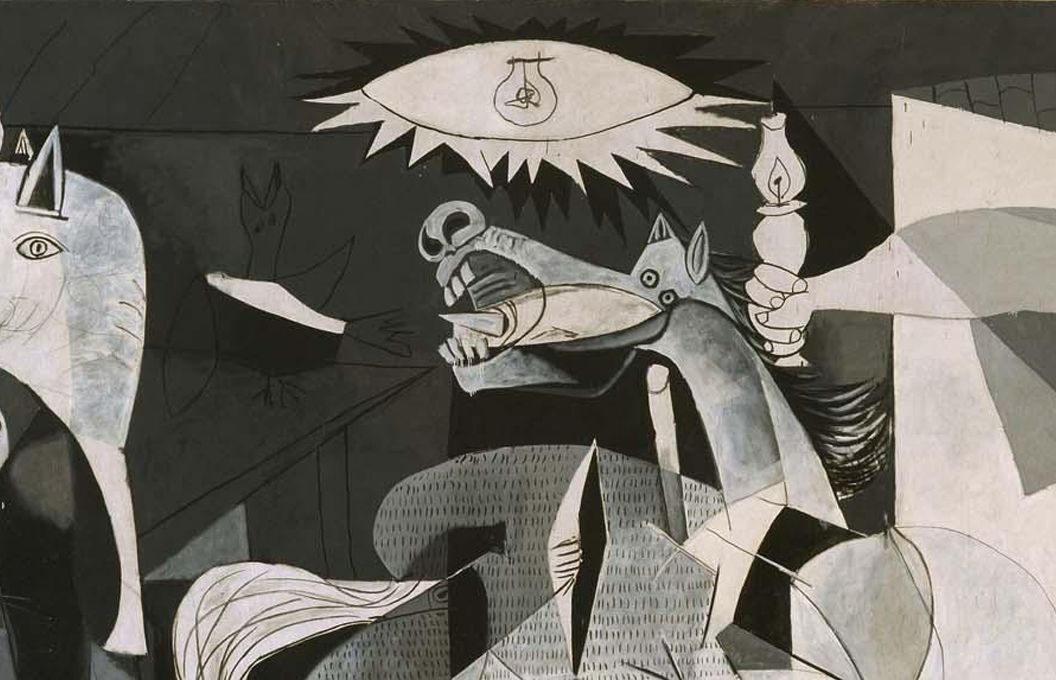Tattoo inspired in Guernica by Picasso.
Picasso under your skin
Tattoos inspired by Pablo Picasso
It’s amazing how often you come across pictures of tattoos with motifs and designs inspired by Pablo Picasso and his works on Instagram. What spurs people to choose a particular image to have tattooed on their body?
For some, the reasons are personal, even secret: a thought or event they don’t want to forget and decide to leave an indelible reminder of it on their skin. In contrast, for others no serious reflection is required, and it’s more of a spur-of the-moment and less momentous decision.
Keep the light on
In 2015, actress Kristen Stewart had a tattoo done with a motif from Picasso’s mural Guernica: the lamp with a light bulb and a crown on a black background. The story is curious to say the least. The previous year this fragment of the great painting had been sported by the female character she played in the film Clouds of Sils Maria (2014). A temporary tattoo, a black rectangle with an eye in the negative space whose pupil resembled a light bulb, adorned the actress’s forearm. It was the iconic lamp in the upper center of the composition of Picasso’s Guernica.
 Detail from the mural Guernica, executed by Pablo Picasso in 1937. © Archivo fotográfico Museo Nacional Centro de Arte Reina Sofía
Detail from the mural Guernica, executed by Pablo Picasso in 1937. © Archivo fotográfico Museo Nacional Centro de Arte Reina Sofía
Stewart has often recounted that when the image was removed after filming, she felt that something was missing from her arm and decided to get a permanent tattoo. She has sometimes also explained that wearing it reminds her how, when she visited Madrid at the age of 18 and saw Guernica on display, it was the first time she responded emotionally to a work of art. ‘I love what it makes me think of. It’s like keep going, and keep the fcking light on*’.
Shaping identities
How many people have become acquainted with Picasso’s work for the first time on discovering the tattoo on the actress’s arm? An internet search for ‘Kristen Stewart tattoo meaning’ returns hundreds of hits. We also find hundreds of replicas, copies and imitations on many other people’s skin. Patches of painted skin which we can’t stop looking at and which arouse curiosity, doubts or admiration.
Tattoo art has become one of the contemporary technologies that help build subjectivity and personal identity, and it’s also a form of relating personally to others. When someone has a Picasso tattooed onto their skin, it seems that they appropriate it – the artist merges with the tattooed person’s identity and enriches it with new meanings. It thus acts as a means of conveying desires, aspirations or simply admiration for a figure who has become a collective and universal icon.


